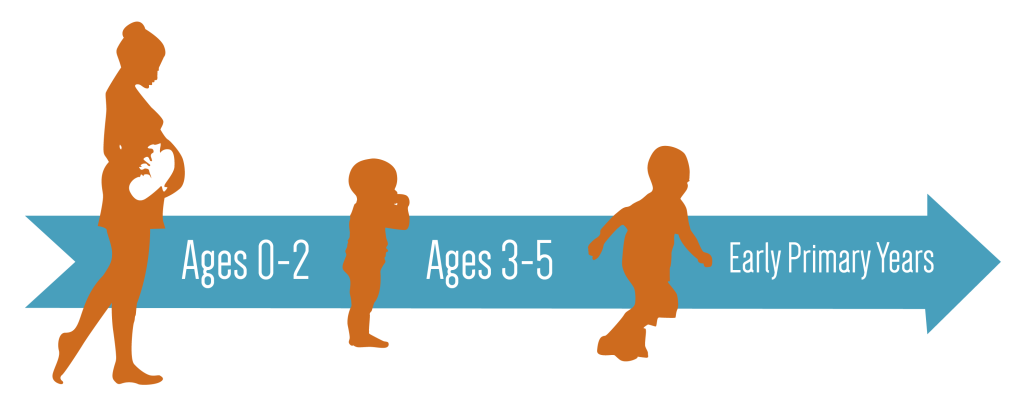Early childhood comprises a number of life stages, marked by developmental milestones. Here, we define early childhood as the period from birth to age eight, although we also recognize the importance of quality prenatal care in early childhood outcomes. Ours is a definition shared by many leading national and international organizations. We end with age eight because it reflects an important developmental milestone. Age eight corresponds to third grade, a critical year for mastery of the reading skills upon which further learning will build and a reliable predictor for future education success.
Although ages zero to eight represent a clear developmental continuum, there are good reasons why funders and programs specialize in one stage. The needs of children and their families evolve and different organizations are positioned to play different roles at different stages. For example, infants and their parents may be more easily reached through the health system, while the prospects of older children may be more easily influenced through their elementary school. Ideally, investments across all stages would be sequenced and coordinated so that the child who benefits as an infant from one program moves seamlessly to environments that will continue to support her development.
Funders who consider this continuum and work to situate their investments alongside other effective programs are likely to see the highest impact.

What does it mean to be “at-risk”?
Many of the programs we profile in this toolkit focus on “at-risk” children. An “at-risk” child is one who, given a number of factors related to his family situation and environment, is more likely than the average child to experience abnormal brain development, have difficulties succeeding in school and in life, and in some instances is also more likely to engage in behaviors (such as smoking or taking drugs) that are detrimental to health.
The following factors, especially in combination, can statistically increase a child’s risk level:
- Living in poverty
- Coming from a family whose first language is not English
- Having a mother who never completed high school
- Having a parent who is emotionally unstable
- Exposure to violence either at home or in the community
While being “at-risk” does not necessarily imply poor outcomes for a child, fewer risk factors are generally associated with better outcomes.
